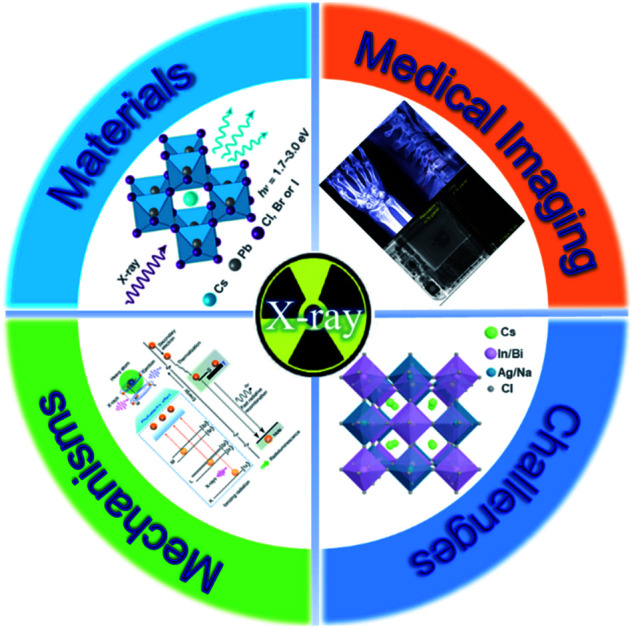- Record: found
- Abstract: found
- Article: found
All-inorganic perovskite nanocrystals: next-generation scintillation materials for high-resolution X-ray imaging

Read this article at
Abstract
With super strong penetrability, high-energy X-rays can be applied to probe the inner structure of target objects under nondestructive situations. Scintillation materials can down-convert X-rays into visible light, enabling the reception of photon signals and photoelectric conversion by common sensing arrays such as photomultiplier tubes and amorphous-Si photodiode matrixes. All-inorganic perovskite nanocrystals are emerging photovoltaic and scintillation materials, with tremendous light-conversion efficiency and tunable luminous properties, exhibiting great potential for high-quality X-ray imaging. Recent advancements in nanotechnology further accelerate the performance improvement of scintillation materials. In this review, we will provide a comprehensive overview of novel all-inorganic perovskite nano-scintillators in terms of potential applications in low-dose X-ray medical radiography. Compared with conventional scintillators, the merits/drawbacks, challenges, and scintillation performance control will be the focus of this article.
Abstract
This review summarizes the recent research progress in all-inorganic perovskite nano-scintillators in terms of their potential applications in X-ray imaging and provides references on scintillation performance control for future material design.

Related collections
Most cited references120
- Record: found
- Abstract: found
- Article: not found
Electron-hole diffusion lengths exceeding 1 micrometer in an organometal trihalide perovskite absorber.
- Record: found
- Abstract: found
- Article: not found
Nanocrystals of Cesium Lead Halide Perovskites (CsPbX3, X = Cl, Br, and I): Novel Optoelectronic Materials Showing Bright Emission with Wide Color Gamut
- Record: found
- Abstract: not found
- Article: not found